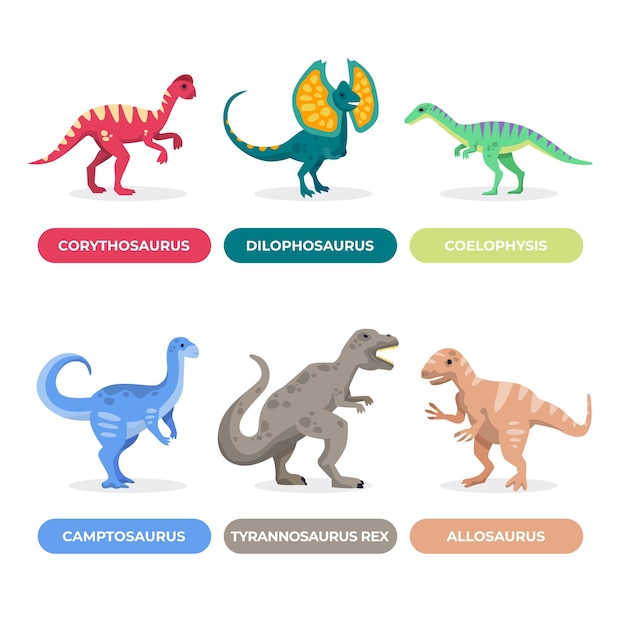Giganotosaurus – Fascinating Facts About the Giant Predator

The Giganotosaurus was one of the largest carnivorous dinosaurs to ever roam the Earth.
The Giganotosaurus lived during the Late Cretaceous period, approximately 98 to 97 million years ago.
Its name means giant southern lizard in Greek.
Giganotosaurus had a long, narrow skull with sharp teeth, ideal for tearing through flesh.
It is estimated that the maximum length of a Giganotosaurus could reach up to 43 feet.
Giganotosaurus had a large, muscular body, allowing it to overpower its prey.
This dinosaur is believed to have been an apex predator, feeding on herbivorous dinosaurs like Argentinosaurus.
Giganotosaurus likely had a keen sense of smell, helping it locate its prey.
The Giganotosaurus had short, powerful arms with three-fingered hands.
It is thought that Giganotosaurus may have been able to reach speeds of up to 31 miles per hour when chasing its prey.
Giganotosaurus had a long, whip-like tail that helped it maintain balance while running.
Fossil evidence suggests that Giganotosaurus may have lived in packs or hunted in groups.
The teeth of Giganotosaurus were serrated, which means they had saw-like edges.
Giganotosaurus had large eyes, indicating that it may have had excellent vision.
The Giganotosaurus likely had feathers or quill-like structures on its body, similar to modern-day birds.
The first Giganotosaurus fossils were discovered in Argentina in 1993.
Giganotosaurus – Fascinating Facts About the Giant Predator part 2
The discovery of Giganotosaurus provided scientists with new insights into the diversity of large carnivorous dinosaurs in the Southern Hemisphere.
Giganotosaurus is believed to be closely related to other large theropods like Tyrannosaurus rex and Carcharodontosaurus.
The Giganotosaurus likely had a stronger bite force than Tyrannosaurus rex.
Giganotosaurus may have had a specialized feeding strategy, targeting the necks or bellies of its prey.
The climate during the time of the Giganotosaurus was warm and humid, with lush vegetation.
Giganotosaurus was likely an opportunistic hunter, scavenging on the remains of other dinosaurs’ kills.
The Giganotosaurus likely had hollow bones, making it lighter and more agile.
The Giganotosaurus had a unique nasal structure similar to crocodiles, allowing it to breathe while its mouth was submerged in water.
Giganotosaurus fossils suggest that they had tumors, indicating that they may have suffered from diseases like cancer.
A fully grown Giganotosaurus may have weighed up to 13 tons.
Giganotosaurus had a large, gaping jaw that could open wide enough to devour sizable prey.
It is believed that Giganotosaurus had excellent hearing, allowing it to detect the footsteps of prey from a distance.
Giganotosaurus likely had a strong sense of territoriality, defending its hunting grounds from other predators.
The presence of Giganotosaurus in the fossil record indicates a diverse ecosystem with abundant food resources.
Giganotosaurus likely had a complex social structure, with dominant individuals leading smaller pack members.
The Giganotosaurus may have engaged in territorial displays to assert dominance or attract mates.
The mating season for Giganotosaurus may have involved elaborate courtship rituals.
Giganotosaurus had a rapid growth rate, reaching adult size in just a few years.
The Giganotosaurus may have engaged in communal nesting, with multiple females laying eggs in the same area.
The size of Giganotosaurus eggs suggests that they may have had a longer incubation period than other dinosaurs.
Giganotosaurus displayed sexual dimorphism, with males being larger and more robust than females.
Giganotosaurus likely had a keen sense of balance, allowing it to navigate difficult terrain with ease.
Some researchers believe that Giganotosaurus may have had feathers for insulation rather than flight.
The discovery of Giganotosaurus revolutionized scientists’ understanding of dinosaur evolution in South America.
The hunting strategy of Giganotosaurus may have involved stalking its prey before launching a swift attack.
The Giganotosaurus likely had a strong immune system to ward off infections and injuries.
The coloration of Giganotosaurus remains a mystery, as fossilized skin pigments have not been preserved.
The Giganotosaurus may have engaged in intraspecific competition, fighting for dominance within its pack.
The extinction of Giganotosaurus, like many other dinosaurs, is likely linked to the catastrophic event that wiped out most life on Earth around 65 million years ago.